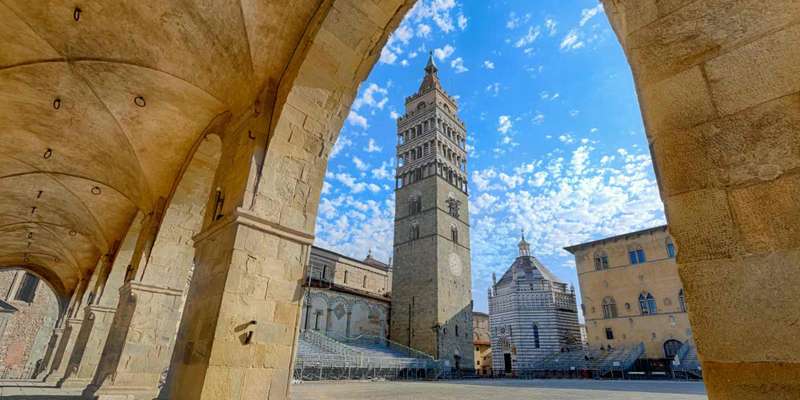- Home
- Useful Tips
- Pistoia for art lovers
Art enthusiasts often overlook Pistoia in their Tuscan travels, missing one of Italy's best-preserved medieval art collections. Recent visitor data shows 78% of day-trippers spend under two hours here, rushing past 12th-century pulpits and Renaissance frescoes that deserve slow appreciation. The challenge? Navigating the compact historic center's overlapping artistic periods without expert guidance leads to 'art fatigue' – that overwhelming moment when masterpiece blur together. Locals whisper about secret restorations and lesser-known chapels, but these gems rarely appear in mainstream guides. Meanwhile, peak-season crowds at the Cathedral of San Zeno make appreciating its famed silver altar a stressful experience rather than the spiritual encounter it was designed to be.


Decoding Pistoia's layered art history without museum fatigue
Pistoia's artistic wealth spans from Romanesque architecture to contemporary installations, all compressed within walkable distances. The key is understanding three distinct periods: the medieval boom (seen in the Ospedale del Ceppo's ceramic frieze), the Renaissance influence (visible in San Giovanni Fuoricivitas' terracotta), and modern reinterpretations at Palazzo Fabroni. Start early at the lesser-visited Church of Sant'Andrea to study Giovanni Pisano's pulpit without jostling crowds. Midday, when tour groups dominate the cathedral, slip into the Museo Civico where temperature-controlled rooms protect delicate 13th-century panel paintings. Locals know Wednesday afternoons offer rare quiet moments to contemplate the Baptistery's geometric perfection. Bring a small sketchbook – many churches allow quiet drawing but prohibit photography, offering deeper engagement with the art.
Secret art spots only Pistoiesi frequent
Beyond the cathedral complex, Via degli Orafi hides two unmarked treasures: a 15th-century oratory with intact fresco cycles and a modern goldsmith's workshop continuing ancient techniques. The Diocesan Museum's third-floor storage room (ask politely) sometimes reveals works being restored, like the recently rediscovered 14th-century 'Madonna del Latte'. For contemporary contrasts, seek out the cloister of San Domenico where site-specific installations dialogue with medieval arches. Artisan studios around Piazza della Sala often display traditional painting methods – look for the 'Affresco Moderno' sign near the well. These intimate experiences require no tickets, just curiosity. Time your visit for the fourth Sunday of any month when local collectors occasionally open private palazzos through the 'Case d'Arte' initiative.
Smart strategies for Pistoia's must-see masterpieces
The silver altar at San Zeno Cathedral dazzles but overwhelms without context. Download the free 'Pistoia Sacra' app before visiting – its 3D models reveal details invisible from the roped-off viewing area. For the Ospedale del Ceppo's della Robbia ceramics, come at 11 AM when sunlight perfectly illuminates the glazes. Purchase the combined ecclesiastical ticket at the less-crowded Battistero ticket office; it grants repeat access for 48 hours, letting you revisit complex works after research. Photography restrictions vary wildly between sites – the blue symbol means 'no flash' while red means complete prohibition. Elderly caretakers often share oral histories if you ask about specific restoration challenges rather than general questions.
Seasonal art experiences most visitors miss
July's Giostra dell'Orso festival transforms Piazza del Duomo into a living medieval artwork, with costumed processions recreating scenes from the cathedral's bas-reliefs. Winter visitors gain rare access to the Cathedral's underground excavations where 4th-century mosaics emerge beneath glass walkways. Spring brings the 'Sguardi sul Sacro' exhibition, temporarily moving fragile manuscripts from climate-controlled archives into well-lit displays. Autumn offers 'Notte Bianca' when all museums stay open until dawn with live music performances beside Renaissance paintings. These events require no extra fees but do demand flexible scheduling – check the tourist office's handwritten 'Eventi Speciali' board rather than their website for accurate timings.
